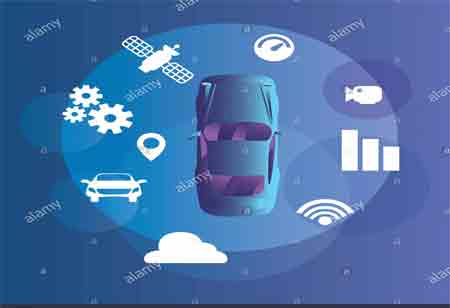THANK YOU FOR SUBSCRIBING
THANK YOU FOR SUBSCRIBING
Be first to read the latest tech news, Industry Leader's Insights, and CIO interviews of medium and large enterprises exclusively from Auto Tech Outlook

By
Auto Tech Outlook | Thursday, June 10, 2021
Stay ahead of the industry with exclusive feature stories on the top companies, expert insights and the latest news delivered straight to your inbox. Subscribe today.
The automotive industry needs to develop software securely as they need to provide multiple obstacles to discourage hackers.
FREMONT, CA: According to projections, there will be numerous connected vehicles on the road by 2025. Machine learning and rule-based algorithms are slowly taking over the decision-making process in the car. More computerized functions are being incorporated into vehicles to improve the driving experience.
Advancements come at a price because hackers continuously search for innovative ways to exploit these new technologies to breach vehicle systems. With new technologies, their options are limitless, from physical access attacks to remote attacks utilizing off-board devices like smartphones and supply chain or aftermarket attacks.
Such security risks can endanger an entire fleet. As a result, the automotive cyber threat landscape is becoming highly complicated as the industry struggles to protect vehicle systems while maintaining a high level of safety and privacy.
Software Development In The Automotive World
There are numerous resemblances between developing software for vehicles and designing software for other systems. As a result, the Software Development Life Cycle ("SDLC") is comparable. Planning, analysis, design, development and implementation, testing, and maintenance are all part of the process. The intricate and regulated nature of the automotive sector forces developers to take crucial and unique considerations into account.
Business Considerations
OEMs strive to integrate multiple connectivity platforms into the vehicle, including Bluetooth, NFC, and Wi-Fi to the smartphones, and committed guidelines to other cars in the fleet and the environment. Wireless-enabled systems introduce the car and its passengers to an entirely new world of threats, and the more connected the vehicle, the greater the risks. There are numerous examples: obtaining cross-fleet information increases the risk of being attacked by cars in the same fleet or by the automotive SOC. Smartphones can gain access to the top wireless standards like Wi-Fi and Bluetooth. Each new technology needs an entirely new set of guidelines to avoid hacker exploitation.
Impact and Complexity
A neglected vulnerability in the software development process can have far-reaching, life-threatening consequences. Unlike several other industries, the associated risks compel the developers to make no errors. It is still difficult to easily upgrade the vehicle in connected cars, so each development must fulfill security standards prepared for a few years in advance.
Common Vulnerabilities
Vulnerabilities in the vehicle's software are frequently classified into two types: design and implementation. From the initial phases of software development to the testing phase, it is critical to consider at least known vulnerabilities.
Architecture and Design vulnerabilities- These are faults in the logic of the system. While the system functions as expected, it reveals assets due to the incorrect handling of unforeseen edge cases.
Implementation vulnerabilities- These are caused by inappropriate system logic implementation. Data corruption causes the program to act in unexpected ways based on how data is represented and interpreted.
 Copyright © 2025 AutoTech Outlook. All Rights Reserved | Privacy Policy | Subscribe | Sitemap | About us | Feedback Policy | Editorial Policy
Copyright © 2025 AutoTech Outlook. All Rights Reserved | Privacy Policy | Subscribe | Sitemap | About us | Feedback Policy | Editorial Policy 



